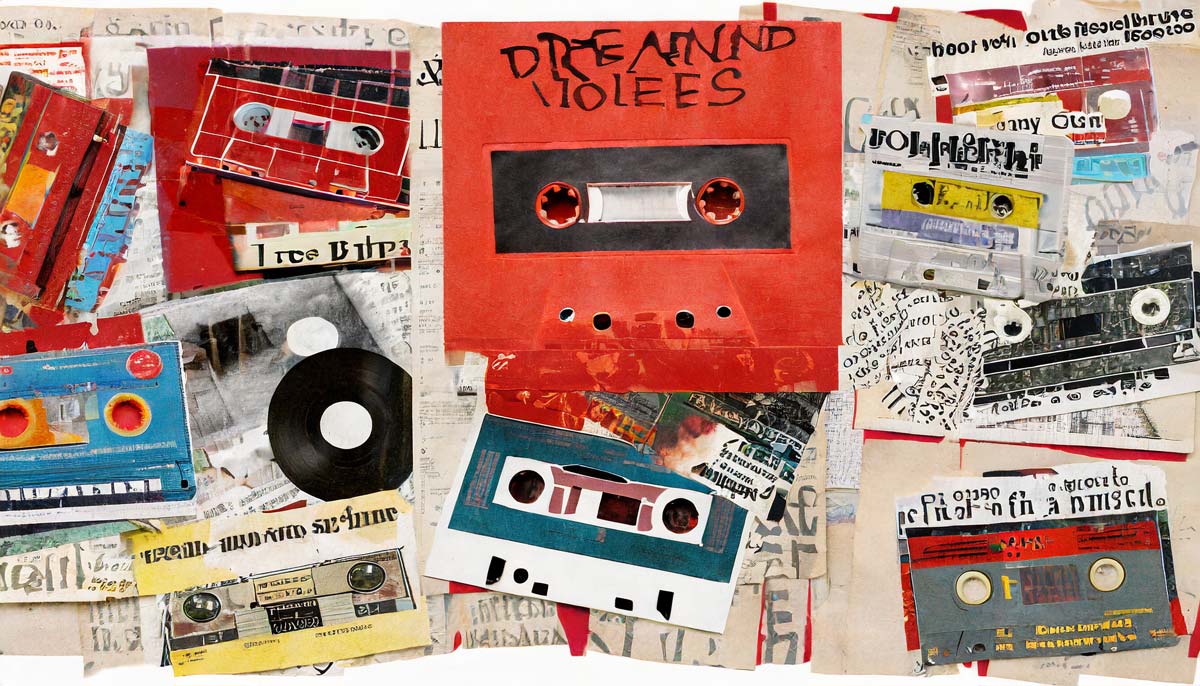Your cart is currently empty!

The Beatles and OG Cassette Culture: Do the Red and Blue Album Remixes Foretell a Transformative Revisit to the Cassette Culture Archives?
The Beatles’ influence on music is undeniable, but their impact on the original (OG) cassette culture of the 1980s and 90s is a fascinating thread that ties together generations of music makers and lovers. This connection has been brought into sharp focus with Giles Martin’s recent 2023 remixes of the Red and Blue albums, which could signal a new era for the rediscovery and reimagining of archival DiY cassette music. (I could write much about how that would not be a good idea; I could also write about how that would be very cool).
As most of you probably know, Giles Martin, son of legendary Beatles producer George Martin, has taken on the monumental task of remixing these iconic Beatles compilations. Using cutting-edge technology, he has breathed new life into these timeless tracks, demonstrating how modern techniques can revitalize classic music.
This technological evolution may not be confined to the works of world-renowned bands like The Beatles. It could also be applied to the treasure trove of music captured on cassettes during the 80s and 90s. This era witnessed an explosion of creativity, as artists released limited runs of their music on cassettes, often recording in makeshift home studios.
Would it be good or bad to give AI the task of transforming cassette art?
Among these DIY musicians, somewhat tangentially, were a surprising number of Beatles fans. Artists like Greg Stomberg, KD Schmitz, Ken Clinger, myself and many more were known to share their own unique takes on Beatles songs. These covers, recorded on humble cassette tapes, are testament to the enduring influence of the Fab Four, permeating even the underground music scene.
The charm of these cassette tapes lies not just in the music they contain, but also in the personal connection they create between the artist and the listener. Each tape was a labor of love, often accompanied by handwritten notes or hand-drawn cover art. This intimate connection is something that digital music often lacks, making these cassette tapes all the more precious.
Later, at the beginning of the digital online age, a group of these artists collaborated as the Tapegerm Collective and released a secret album called “No. 9” which utilized Beatles loops to mangled effect.
The potential to apply the same technology used in Giles Martin’s remixes to archival cassette tapes is exciting. It would allow us to restore and preserve this important part of music history, ensuring that future generations can experience the raw energy and creativity of the 80s and 90s cassette culture.
The Beatles’ legacy continues to evolve and inspire, from their direct influence on music to their indirect impact on DIY cassette culture. As we look forward to the possibilities that technology like Giles Martin’s remixes can bring, we also look back on the rich tapestry of music history, woven together by artists across generations who all share a love for the Beatles.
by
Tags:
Comments

- Ads (3)
- Albums (138)
- Artificial Intelligence (1)
- Audio Art (13)
- Books (3)
- Briyan (1)
- Business (5)
- Cassette Culture Shock (3)
- Channels (2)
- Collaboration Projects (4)
- Comics (1)
- Creative (10)
- Discover Sounds (1)
- Editorial (2)
- GAJOOBTube (2)
- Gear (8)
- Instruments (4)
- Interviews (9)
- Labels (14)
- Letters (3)
- Library (14)
- Links (5)
- Merch (2)
- News (2)
- People (17)
- Performance (1)
- Podcast (1)
- Profiles (29)
- Projects (0)
- Tapegerm (6)
- Uncategorized (7)
- Video (3)
- Video & Vlogging (0)
- Vlogs (1)
- Websites (6)
- Zine Making (1)
- Zines (11)

*Purchasing via Amazon affiliate links helps support our efforts at no additional cost to you. Thank you!


Leave a Reply
You must be logged in to post a comment.